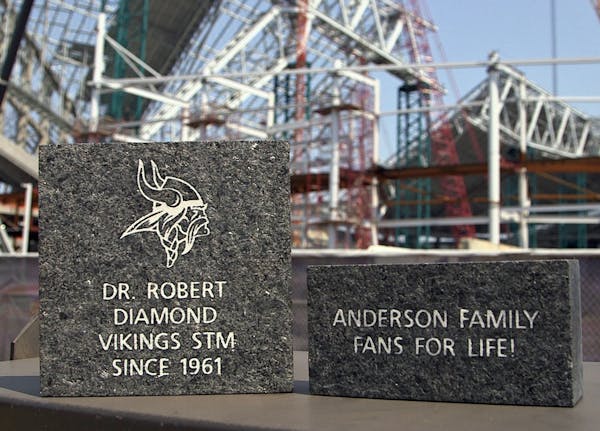Wearing matching "Avian Allies" T-shirts, three west-suburban middle-school students Friday proposed placing ultraviolet-infused plastic film on U.S. Bank Stadium's glass to prevent bird collisions and fatalities.
Sam Dodd, 13, his sister Elena Dodd, 11, and their friend Alex Schwaller, 13, gave an information-packed presentation during a public forum portion of the Minnesota Sports Facilities Authority (MSFA) monthly meeting. The three, all students at Minnetonka Middle School West, focused on bird safety as a part of a science competition.
After the meeting, attended only by two of the four MSFA commissioners as well as Chairwoman Michele Kelm-Helgen, almost everyone in the room congratulated them on their work.
But the MSFA isn't keen to take action any time soon. Kelm-Helgen said a study of bird fatalities begins in the spring. It will span four migratory seasons. After the study, the MSFA will consider whether there is a fatality problem and what can be done.
"We are certain you will find there is a problem," Sam Dodd told the panel. "The problem is huge."
Sam argued that birds are dying all over North America from glass collisions. He held up a sign that read, "9,285" with an illustrated splash of red blood to portray the number of birds that presumably died during in the five-minute presentation. "The birds are dying and we aren't doing anything," Sam said.
The sheer glass all over the stadium facade is a signature design element to the building. But environmentalists have pushed — even before the glass went in — for it to be etched so that birds can avert course rather than get confused and collide. During construction of the building, Kelm-Helgen said the MSFA was looking into film that could be applied to the glass and would be transparent to all but the birds. Last summer, she changed the plan, saying there would be a multiyear study to determine whether there is a problem with collisions.
Schwaller said a massive structure like the $1.1 billion stadium, with 4 acres of glass, "is a huge problem."
Elena Dodd said the prototype for the UV film they've created would preserve the building's translucence. The film would be visible only to birds because they see a broader spectrum of light than humans do. Also, the film could be applied to the interior side of the glass, making for easier installation and protecting it from weather, she said. In addition, the students showed how the film could be a source of ad revenue, which would be used to pay for the installation.
Schwaller shined an ultraviolet light on the prototype to show a previously invisible relief logo of U.S. Bank Stadium.
The students acknowledged the film wouldn't work on all the stadium glass, but encouraged the MSFA to consider etchings on other parts of the building.
Kelm-Helgen told the students that their work would be added to the bird study.
Rochelle Olson • 612-673-1747
Twitter: @rochelleolson

Minneapolis schools, teachers reach tentative agreement to avert strike
Men knock woman down and steal her dog during walk, St. Paul police say

Minneapolis reaches $150k settlement with eyewitness of George Floyd's murder
He grew up legally in Minnesota, but immigration law gap may one day force student to leave

